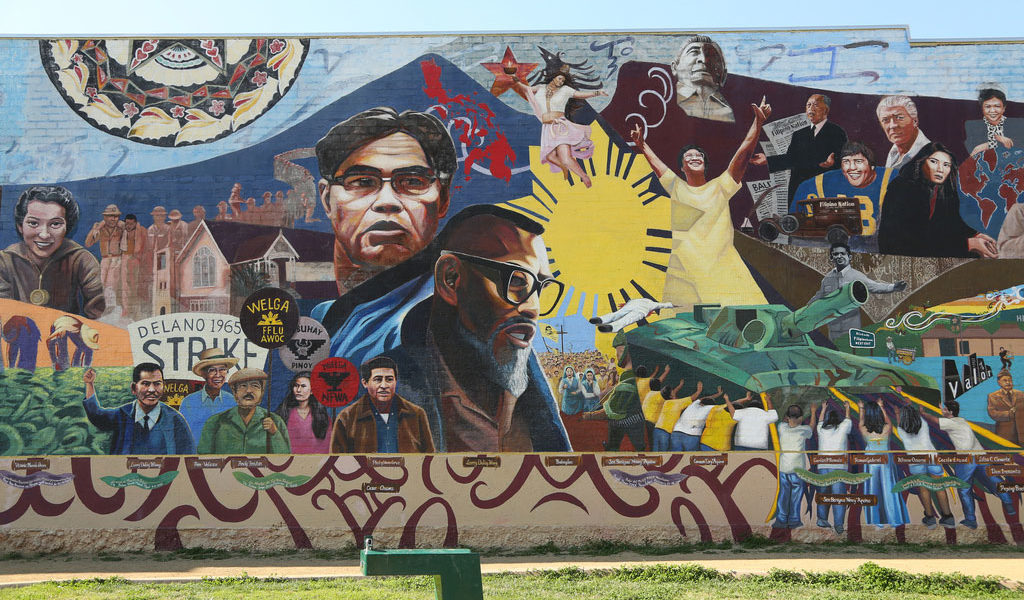THOUGH it feels as if Filipinos only just made it to the United States in the mid-to-late 20th century, it’s worth knowing that Filipinos made their mark centuries earlier.
The first recorded Filipinos to touch North American soil arrived on Oct. 18, 1587; Filipinos arrived in Morro Bay, California before the United States was founded.
The Filipino American National Historical Society (FANHS) — the Seattle, Washington-based that first commemorated October as Filipino American History Month — declared FAHM 2022’s theme as “Celebrating Our History and Legacies: 50 years of Filipino American Studies, 40 Years of the FANHS, and 30 Years of Filipino American History Month.”
Filipino American History Month is often mistaken as Filipino American Heritage Month, but FAHM was first established in 1992 to honor the past and to look back on the history of struggle, triumph, and evolution of Filipinos in America.
FANHS has emphasized the importance of recognizing history (as opposed to heritage) as it is a broader area to explore that includes understanding historical figures, events, and the lives of Filipinos rather than just cultural customs and traditions.
From the Morro Bay arrivals in the 16th century to the appointment of the first Filipino American attorney general in 2021, Filipino Americans have established themselves as a culturally significant community without which the United States would never be the same.
In 1982, Dorothy Laigo Cordova and her husband Fred Cordova — both of whom had been active in Filipino American advocacy since the 1950s as students at Seattle University — founded the FANHS, which was the first “national group committed to promoting and preserving Filipino American history,” according to FANHS’s website.
Through FANHS, the Cordovas made it their mission to educate Filipinos and non-Filipinos through community workshops and lectures, national conferences, and artistic and multimedia presentations. FANHS currently has 42 chapters across the United States.
Among the many milestones FAHNS is highlighting for FAHM 2022 includes the emergence of Filipino American history being taught in schools.
In 1962, UCLA and UC Davis taught the first Filipino American Studies (FAS) courses, which spawned other similar courses at other colleges in California — like San Francisco State University and City College of San Francisco — and across the country, like Western Washington University and University of Hawai’i and other colleges in Oregon, Michigan and Virginia, according to FAHNS.
Over the next several decades, more schools and educational institutions would adopt FAS classes, from college-level courses to elementary school social studies curricula.
Since the mid-20th century, Filipinos in academia also began to pave the way across all disciplines. In addition to history, scholars from archaeology, psychology, communications, the sciences, and other areas of expertise would help establish the growing volume of academic journals, theory, and other research-based works that continue to help others better understand Filipino American history and identity.
FAHM 2022 marks the 30th official celebration since FANHS formally proclaimed October as Filipino American History Month.
The month of October was chosen to commemorate the Morro Bay arrival in 1587, but it was also chosen to honor renowned labor leader Larry Itliong, whose birthday falls on Oct. 25.
The impact of FANHS’s proclamation reached a head in 2009 when former President Barack Obama officially declared October as FAHM. On Oct. 2, 2015, Obama would celebrate the first FAHM at the White House in which 175 Filipino American community leaders, donning traditional Filipino garb, were present for the historic gathering.
Since Obama’s first official recognition of Filipino American History Month, every U.S. president has recognized October as FAHM, issuing a statement of solidarity and acknowledgement of the Filipino American’s indelible impact on American history and identity.
President Joe Biden took to his social media on Oct. 1 to acknowledge the national observance of FAHM, saying, “Jill and I are proud to recognize Filipino American History Month and celebrate the innumerable contributions and rich heritage of Filipino Americans across our nation. We support, honor, and thank you for all you have done to help fulfill the promise of America for all of us.”
Filipinos comprise the second-largest Asian group in the United States, behind Chinese and Chinese Americans. The Filipino American community itself is a diverse populace with a very rich immigrant community. According to Pew Research, 69% of Filipino American adults were born outside the U.S.
As the community grows — and as the country at large becomes more diverse — Filipino Americans today are making history of their own.
Over the summer, the first major studio film with a majority-Filipino cast premiered in theaters. Pop stars Olivia Rodrigo, H.E.R., and Bruno Mars continue to be pop music mainstays on, not just American charts, but global charts as well.
Perhaps most notably, the scores of Filipinos in medicine — nurses, doctors, epidemiologists, and more — continue to guide the country and the world through a global pandemic.
The opportunities that are available to Filipino Americans are more bountiful than ever and despite the economic, social and cultural strifes that have come in the way, Filipinos today are more emboldened than ever to establish milestones and create their own paths.
California Attorney General Rob Bonta, who became the first Filipino American attorney general in California in 2021, tweeted on Oct. 1, “I’m grateful for our community’s incredible contributions to building this state and nation, and I reaffirm my ongoing commitment to breaking down barriers and widening pathways of opportunity for the Filipino American community.” n










